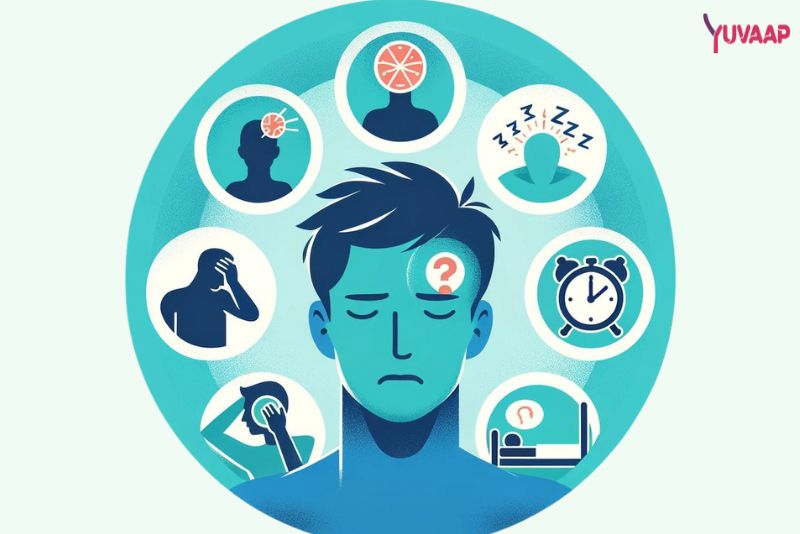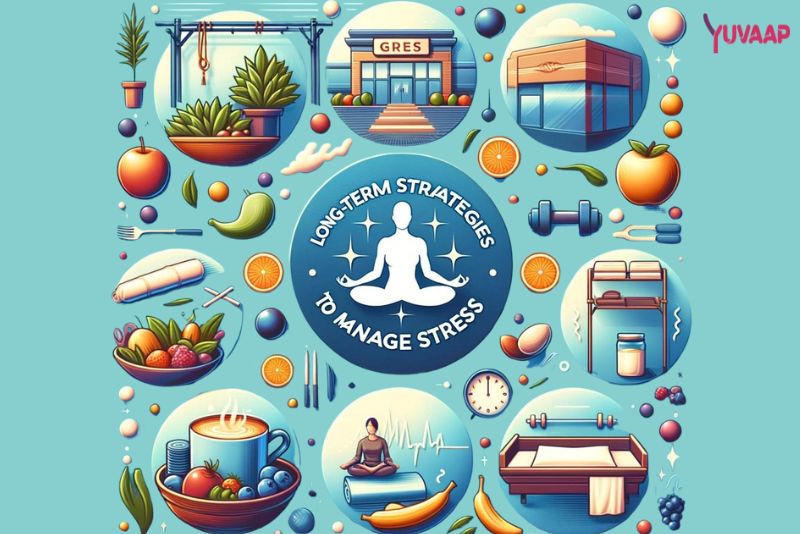Feeling overwhelmed by workplace stress? You’re not alone. Whether it’s tight deadlines, heavy workloads, or conflicts with colleagues, stress at work can significantly impact your mental, physical, and emotional well-being. But don’t worry, we are here to help you transform your approach to managing stress with practical, effective strategies that you can easily integrate into your busy schedule.
You might be thinking, “I don’t have time for stress relief techniques,” or “I’ve tried everything and nothing works.” Maybe you’re sceptical about holistic methods like yoga and meditation, or perhaps your work environment isn’t conducive to practicing these techniques. These are valid concerns, and we’re here to address them.
Imagine having quick, easy-to-follow solutions that fit seamlessly into your day, no matter how hectic it is. Picture yourself feeling calmer, more focused, and in control, even in the most stressful situations. This guide will show you how to achieve just that. By incorporating both immediate stress-relief techniques and long-term strategies, we’ll provide you with a comprehensive approach to managing stress at work. For additional insights on maintaining mental health at work, check out our blog on How to Improve Mental Health in the Workplace.
Ready to reclaim your peace of mind and boost your productivity? Let’s dive in and discover how you can start feeling better today.
Understanding Workplace Stress

Workplace stress is the physical and emotional response you experience when the demands of your job exceed your ability to cope. It can come from various sources, including heavy workloads, tight deadlines, and difficult relationships with colleagues or supervisors.
According to the American Psychological Association, chronic job stress is linked to health issues such as heart disease, depression, and obesity. This highlights the importance of addressing stress holistically, considering mental, physical, and emotional aspects.
Common causes of workplace stress include:
- Excessive workload: AS per NIH, When you have too much to do and not enough time, it can lead to feeling overwhelmed.
- Lack of control: Feeling like you have no say in decisions that affect your job can cause stress.
- Unclear job expectations: Uncertainty about your job responsibilities or performance expectations can lead to anxiety.
- Interpersonal conflicts: Difficult relationships with coworkers or supervisors can create a stressful work environment.
Understanding these causes can help you identify specific stressors in your job, which is the first step in learning how to deal with a stressful job.
Identifying Symptoms of Work-Related Stress

Recognizing the symptoms of work-related stress is crucial for taking timely action. Stress can manifest in various ways, affecting your body, mind, and emotions.
Physical Symptoms
- Headaches: Frequent headaches can be a sign of stress.
- Fatigue: Constant tiredness or lack of energy can indicate that stress is taking a toll on your body.
- Sleep problems: Difficulty falling or staying asleep can be linked to stress.
- Muscle tension: Stiffness or pain in your muscles, especially in the neck and shoulders, can be a result of stress.
Emotional Symptoms
- Anxiety: Feeling nervous, restless, or tense can be a sign of stress.
- Irritability: Being easily frustrated or having a short temper is common with stress.
- Depression: Persistent sadness or a lack of interest in activities you once enjoyed can indicate severe stress.
- Mood swings: Rapid mood changes, from feeling happy to suddenly feeling down, can be stress-related.
Behavioral Symptoms
- Changes in productivity: Stress can cause you to either overwork or underperform.
- Social withdrawal: Avoiding social interactions, both at work and in personal life, can be a sign of stress.
- Unhealthy habits: Turning to alcohol, smoking, or overeating as coping mechanisms can indicate stress. Instead, consider healthier coping mechanisms like yoga, meditation, and balanced nutrition.
By understanding and identifying these symptoms, you can take proactive steps to address them before they escalate.
Immediate Stress-Relief Techniques

When you’re feeling overwhelmed at work, it’s important to have some quick strategies to help you calm down and regain focus. Here are some effective immediate stress-relief techniques:
1. Breathing Exercises
Practicing deep breathing can help reduce stress quickly. For a guided experience, watch our video on Meditation For Stress Relief.
Try the following exercise:
- Inhale deeply through your nose for a count of four
- Hold your breath for a count of four
- Exhale slowly through your mouth for a count of four
- Repeat this cycle four times
2. Mindfulness Practices
Mindfulness can help you stay present and reduce anxiety. A simple mindfulness exercise involves focusing on your senses:
- Take a moment to notice five things you can see
- Close your eyes and identify four things you can hear
- Touch three objects around you and note their textures
- Identify two things you can smell
- Focus on one thing you can taste
3. Physical Activity
Short bursts of physical activity can quickly reduce stress. Consider these options:
- Take a five-minute walk around your office or outside.
- Do some stretching exercises at your desk.
- Practice a few yoga poses, such as the child’s pose or cat-cow stretch. You can also follow our Yoga Session for Stress Relief on YouTube
Regular movement not only alleviates stress but also contributes to overall physical well-being. For more ideas, read our blog on Stress Relief Workout.
4. Time Management Tips
Managing your time effectively can help reduce stress. Try these tips:
- Break your tasks into smaller, manageable chunks
- Prioritize your tasks and focus on completing the most important ones first
- Use a planner or digital tool to organize your schedule
5. Healthy Snacks and Hydration
Eating healthy snacks and staying hydrated can boost your energy levels and reduce stress. Consider:
- Keeping a bottle of water at your desk and sipping it throughout the day
- Having healthy snacks like nuts, fruits, or yogurt available
By incorporating these immediate stress-relief techniques, you can manage your stress levels and improve your productivity throughout the day.
Long-Term Strategies to Manage Stress

While immediate relief techniques are helpful, it’s crucial to adopt long-term strategies to effectively manage stress in your professional life. These strategies focus on building resilience and promoting holistic wellness.
Regular Exercise
Regular physical activity is one of the most effective ways to combat stress. Activities such as yoga, gym workouts, and aerobic exercises can:
- Boost your mood by releasing endorphins
- Improve your sleep quality
- Enhance your overall physical health
Healthy Eating
A balanced diet can have a significant impact on your stress levels. Follow these dietary guidelines:
- Eat plenty of fruits and vegetables to ensure you get essential vitamins and minerals
- Include plant-based proteins and whole grains in your meals
- Avoid excessive caffeine and sugar, which can increase anxiety
- Incorporate healthy fats from sources like avocados, nuts, and seeds
Adequate Sleep
Quality sleep is essential for managing stress. Aim for 7-9 hours of sleep each night by:
- Establishing a regular sleep schedule
- Creating a relaxing bedtime routine
- Keeping your bedroom cool, dark, and quiet
Mindfulness and Meditation
Practicing mindfulness and meditation can help you stay calm and focused. Techniques include:
- Guided meditation sessions using apps or online resources
- Daily mindfulness practices, such as mindful breathing or body scans
- Joining a meditation group or class for additional support
Building a Support Network
Having a strong support network can help you manage stress more effectively. Consider:
- Building relationships with supportive colleagues and friends
- Talking to a trusted mentor or counselor about your stress
- Joining professional or social groups that align with your interests
Professional Help
If stress becomes overwhelming, seeking professional help is crucial. Options include:
- Consult a therapist or counselor to develop coping strategies
- Attending stress management workshops or seminars
- Utilizing employee assistance programs (EAPs) offered by many employers
By implementing these long-term strategies, you can create a sustainable approach to managing stress, ensuring better mental, physical, and emotional health.
Organizational Support and Resources
Employers play a crucial role in mitigating workplace stress and promoting a healthy work environment. Here are some ways organizations can support their employees:
- Employee Assistance Programs (EAPs): Many organizations offer Employee Assistance Programs that provide confidential counseling and support services. EAPs can help employees deal with personal and professional issues that contribute to stress.
- Workplace Wellness Programs: Organizations can implement wellness programs that focus on holistic health. These programs might include yoga sessions, gym memberships, meditation workshops, and nutritional counseling. Such initiatives promote overall well-being and can significantly reduce stress.
- Flexible Work Arrangements: Offering flexible work hours or the option to work from home can help employees balance their professional and personal lives more effectively. Flexibility can reduce stress and improve job satisfaction.
- Open Communication: Encouraging open communication between employees and management can help identify stressors early. Regular check-ins, feedback sessions, and an open-door policy can create a supportive work environment where employees feel heard and valued.
- Training and Development: Providing training on stress management, time management, and effective communication can equip employees with the skills they need to handle stress better. Organizations can also offer workshops on holistic wellness practices, such as yoga and mindfulness.
By creating a supportive environment and offering resources, organizations can help employees manage stress and improve their overall well-being.
Personal Development and Stress Management
Personal development is key to managing stress and achieving a balanced life. Here are some strategies to help you grow and manage stress effectively:
Time Management Skills: Improving your time management skills can help you handle tasks more efficiently and reduce stress. Tips include:
- Prioritizing tasks based on importance and urgency.
- Breaking large projects into smaller, manageable steps.
- Using tools like planners or apps to keep track of deadlines.
Setting Realistic Goals: Setting achievable goals can prevent feelings of overwhelm. Ensure your goals are SMART: Specific, Measurable, Achievable, Relevant, and Time-bound. Celebrate small achievements to stay motivated.
Learning to Say No: It’s important to recognize your limits and not take on more than you can handle. Learning to say no politely but firmly can help you manage your workload and reduce stress.
Developing Personal Skills: Improving skills such as assertiveness, communication, and problem-solving can help you navigate stressful situations more effectively. Consider taking courses or reading books on these topics.
Practicing Self-Care: Incorporate self-care practices into your daily routine to maintain your mental, physical, and emotional health. These can include:
- Regular physical activity, such as yoga or gym workouts.
- Meditation and mindfulness exercises.
- Eating a balanced, nutritious diet.
- Ensuring adequate sleep.
- Engaging in hobbies and activities you enjoy.
Holistic Wellness Practices
Embrace holistic wellness practices that integrate mind, body, and spirit. These can include:
- Yoga: Enhances flexibility, strength, and relaxation.
- Meditation: Improves focus and reduces anxiety.
- Healthy Eating: Supports overall health and energy levels.
- Regular Exercise: Boosts mood and reduces stress.
- Adequate Sleep: Essential for recovery and mental clarity.
By focusing on personal development and self-care, you can build resilience and manage stress more effectively.
Managing stress at work is essential for maintaining overall well-being. By understanding the causes and symptoms of stress, and by applying both immediate and long-term strategies, you can effectively reduce stress and improve your quality of life. Embrace holistic wellness practices like yoga, meditation, and a balanced diet to nurture your body, mind, and spirit.
Watch our video on Handling Corporate Stress In Style for practical tips.
Remember, taking proactive steps to manage stress is an investment in your health and happiness. To learn more about balancing your personal and professional life, read our blog on How to Improve Your Work-Life Balance.
Organizations also play a critical role in supporting their employees’ mental health. By offering resources such as Employee Assistance Programs, and wellness programs, and fostering an open communication environment, employers can help create a healthier, less stressful workplace.
Lastly, personal development and self-care are fundamental to managing stress. By improving time management skills, setting realistic goals, and practicing holistic wellness, you can achieve a balanced and fulfilling professional life.
FAQs
References
https://pubmed.ncbi.nlm.nih.gov/33654542
https://www.apa.org/topics/stress/body
https://www.cdc.gov/niosh/docs/2003-114d/default.html

Priyanka Khurana Goyal is a prominent Indian figure renowned for her diverse accomplishments and contributions across various fields.. Read more



